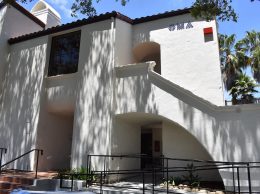Medicare data reveals big price discrepancies
IN THIS ARTICLE
- Health Care & Life Science Topic
- Dana Olsen Author
By Dana Olsen Friday, May 17th, 2013
Why does a hospital in San Luis Obispo charge tens of thousands dollars more for major joint replacement surgery than one across the Santa Barbara County line?
And what’s behind a hospital in the city of Santa Barbara asking twice as much as a facility in nearby Lompoc? And perhaps more puzzling, why is the payment these hospitals actually receive generally the same even though asking prices vary so widely?
Those are the questions raised by a report from the Centers for Medicare and Medicaid Services, a federal government agency that collected data from nearly every hospital in the country. The numbers show huge discrepancies between what hospitals charge for common inpatient procedures, even among hospitals in the same geographic area.
Sierra Vista Regional Medical Center in San Luis Obispo, for example, charges $102,000 for major joint replacement. Compare that to the $66,000 Santa Barbara Cottage Hospital asks for, or the $32,000 charged by Lompoc Valley Medical Center. Sierra Vista’s price is almost identical to the amount listed for Community Memorial Hospital in Ventura, but take a look at other common procedures and those two hospitals vary widely in their pricing for those operations.
The amount a hospital charges Medicare for a procedure, though, is very different — and often much higher — than the amount the hospital eventually receives from the agency. And notably, the amount Medicare reimburses each hospital for the same procedure is pretty much the same.
For joint replacement, for example, Sierra Vista charges nearly seven times more than the amount Medicare typically reimburses for the cost of the procedure. The agency that released the data, which includes the 100 most common inpatient procedures covered by Medicare at more than 3,300 hospitals around the country, said it did so as part of the Obama administration’s quest to make health-care providers “more affordable and accountable.”
So far, though, it appears that the data is leading to more questions than answers.
“Charges are completely irrelevant. Nobody pays hospital charges,” Jan Emerson-Shea, a spokeswoman for the California Hospital Association, told the Business Times. “Medicare doesn’t pay those charges. Commercial health plans don’t pay them, because they negotiate with hospitals … The charges you see are irrelevant numbers.”
Uwe Reinhardt, an economics professor at Princeton, explained the price-payment discrepancy another way in a May 10 column for the New York Times. “‘Charges’ are the prices that a totally inebriated foreign billionaire would pay a U.S. hospital if his wife were not around to control the bloke,” he said.
Reinhardt’s point is that if the data is offered to help patients shop around for the best price for medical procedures, it doesn’t help all that much because it’s unlikely that a patient — or Medicare, or the patient’s insurance agency — would actually pay the asking price.
Joan Bricher, chief financial officer for Santa Barbara Cottage Hospital, said Medicare usually reimburses about 70 percent of the “charge” price for a given service, and Medi-Cal typically pays about 50 percent. The majority of Cottage’s patients are covered by either Medicare or Medi-Cal.
For hospitals in the Tri-Counties, the numbers indicate that, at least for patients who are covered by Medicare or Medicaid, shopping around to find the best prices for medical procedures isn’t all that helpful. “What actually matters is that Medicare pays each hospital almost the same amount. So it doesn’t really matter what hospital you choose,” Emerson-Shea said.
Take the example of treatment for simple pneumonia. According to the data, Twin Cities Community Hospital in Templeton asks for $48,018 to treat the condition, while Marian Regional Medical Center in Santa Maria charges $21,162 and St. John’s Regional Medical Center in Oxnard charges $32,054. But even though the so-called charges differ by tens of thousands of dollars, the amount that Medicare pays the hospitals is very similar. Medicare reimburses Twin Cities an average of $4,925 for treatment of simple pneumonia. The program pays Marian, which charges almost $30,000 less for the treatment, almost the same amount — $5,427. And St. Johns receives an average of $5,489 from Medicare.
For private insurance companies, Emerson-Shea said, the story is similar. Those companies negotiate payments with hospitals based on a variety of factors, including how many of that particular procedure the hospital performs, the severity of the patient’s sickness or injury, and the cost of labor in the community where the hospital is located, among many other determinations. The “charge” number is given little or no consideration.
Patients and their insurers aren’t likely to use the data from the Centers for Medicare to choose which hospital they go to, said Alwyn Cassil, a spokeswoman for the Center for Studying Health System Change, a health policy research agency in Washington, D.C. “Charges are an artifact of hospital billing practices,” Cassil told the Business Times. “There’s a lot of interest in transparency, and many people think if we could just somehow help people understand payments and costs, it would magically make the system function better. But the reality is that the idea that you can use this data to shop for health care doesn’t make sense.”
Cassil, Emerson-Shea from the California Hospital Association, and Cottage Hospital’s Bricher all said patients are likely to make hospital selections based mostly on their health insurance plan and how much their particular insurers will pay for a certain procedure at a certain hospital.
How hospitals determine ‘charges’
If the amount a hospital says it charges for a service, treatment or procedure is irrelevant to the amount it’s actually paid by Medicare — and if charge information is largely irrelevant to consumer decision-making — why do hospitals list those prices at all?
According to a statement from C. Duane Duaner, president of the California Hospital Association, the data “highlights the complexities involved with the way our nation currently pays for the delivery of complex hospital patient care services. The current hospital pricing and payment systems weren’t designed for individual patients to receive bills directly. Rather, they have evolved since the enactment of Medicare in 1965 into what is often a convoluted list of charges for every item or service.”
The law that put Medicare into effect required every hospital in the country to maintain a document called the “chargemaster,” which listed the price for every service and procedure. At that time, Medicare paid the listed prices. In the 1980s, Medicare moved away from that payment system to one using so-called diagnostic-related groups — a system still in place today. Under that system, hospitals classify services, products and procedures into a “group,” and it is prices for those groups that are listed on the Centers for Medicare data report. Essentially, Emerson-Shea said, the new payment system rendered the “chargemaster” system almost obsolete, but hospitals are still required to maintain those documents.
The amount hospitals aim to collect from Medicare and private insurers, Bricher said, is largely unrelated to the prices listed. She said Cottage Hospital takes many factors into account. The hospital starts with the base cost of the procedure, which includes supplies and drugs, then adds other costs such as labor. The cost of procedures vary wildly between hospitals, she said, partly because services and patients are always different. “A knee is not a knee is not a knee, and a sick baby is not the same as a well baby,” she said.
Bob Baden, chief financial officer at Lompoc Valley Medical Center, said his hospital also determines the base price of a service by looking at the cost. He said that although the hospital tries not to increase prices year by year, it does review Medicare pricing to make sure the hospital is charging at least as much as Medicare typically reimburses.
St. John’s Regional Medical Center and St. John’s Pleasant Valley Hospital, located in Oxnard and Camarillo, respectively, sent the Business Times a statement. “Our pricing is set to ensure that the needs of our hospitals and communities are met, and represents the cost of doing business in the Ventura market. Some of these costs include labor, equipment, seismic improvements, pharmaceutical costs, etc.,” the statement says.
A spokeswoman from the three Dignity Health hospitals on the Central Coast — Arroyo Grande Community Hospital, French Hospital Medical Center in San Luis Obispo, and Marian — said their prices are designed to reflect the needs of the community, balanced with the cost of doing business.
The other hospitals in the Tri-Counties either didn’t respond to requests for comment or declined to comment.
Pricing reform proposed
Many experts say that to achieve pricing transparency, the system must change. “As the hospital community in California, we realize the system doesn’t make sense,” Emerson-Shea said, adding that the state’s hospital association is using next year’s implementation of the Affordable Care Act as a catalyst to find a method to overhaul the pricing system.
On a federal level, the American Hospital Association is working on the same problem. “The complex and bewildering interplay among ‘charges,’ ‘rates,’ ‘bills’ and ‘payments’ across dozens of payers, public and private, does not serve any stakeholder well, including hospitals,” American Hospital Association President and CEO Rich Umbdenstock said in a statement. “The AHA and its members stand ready to work with policymakers on innovative ways to build on efforts already occurring at the state level.”
Related Articles
 Friday, September 16th, 2022
Friday, September 16th, 2022










